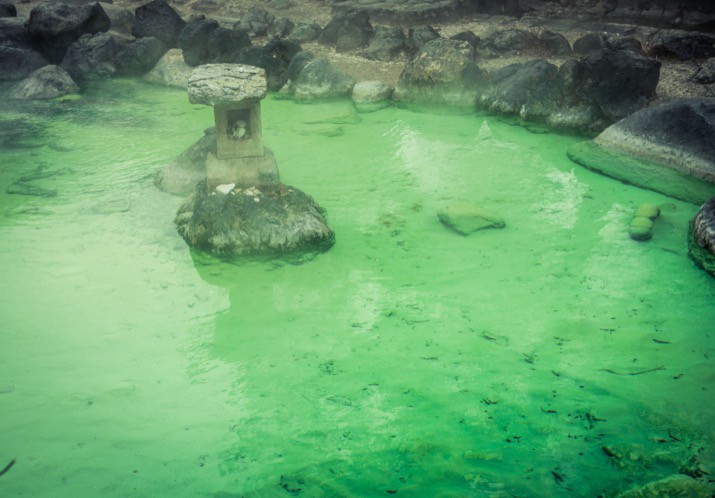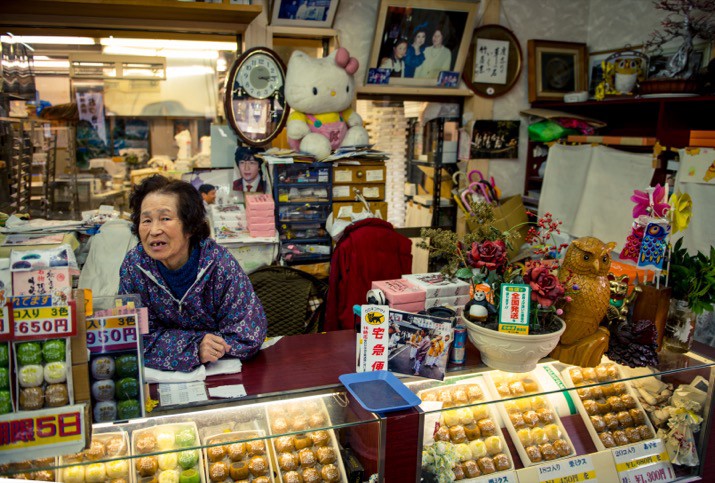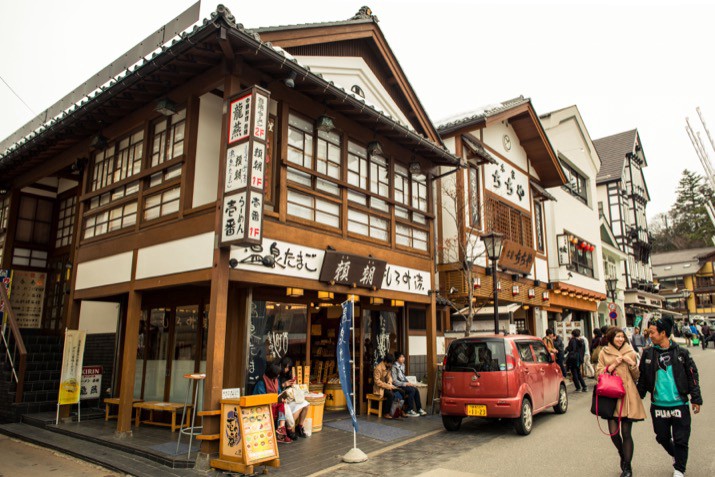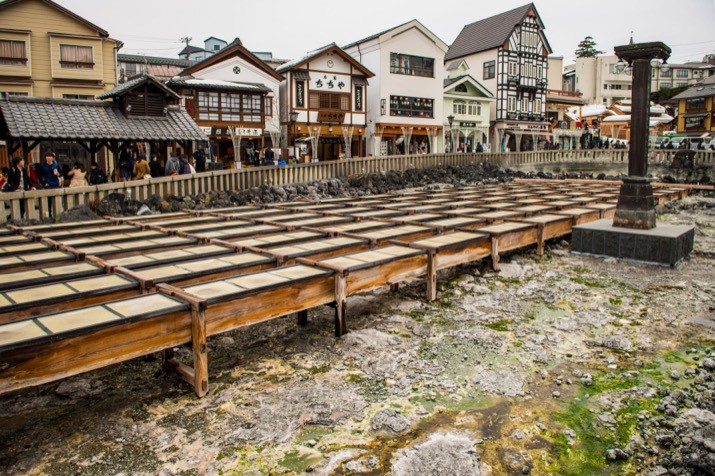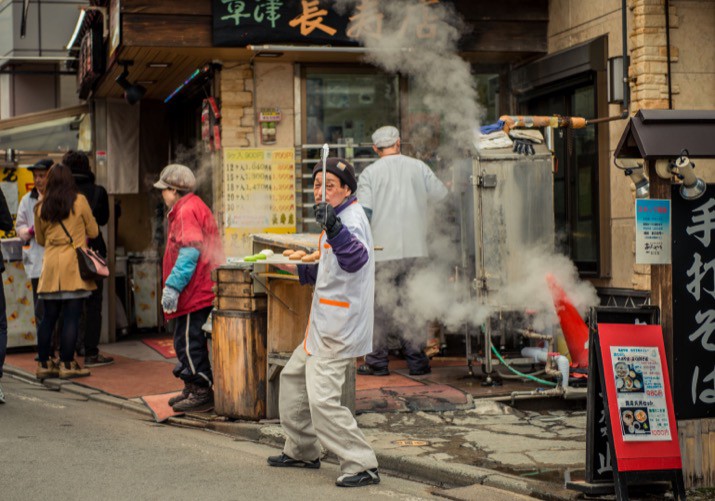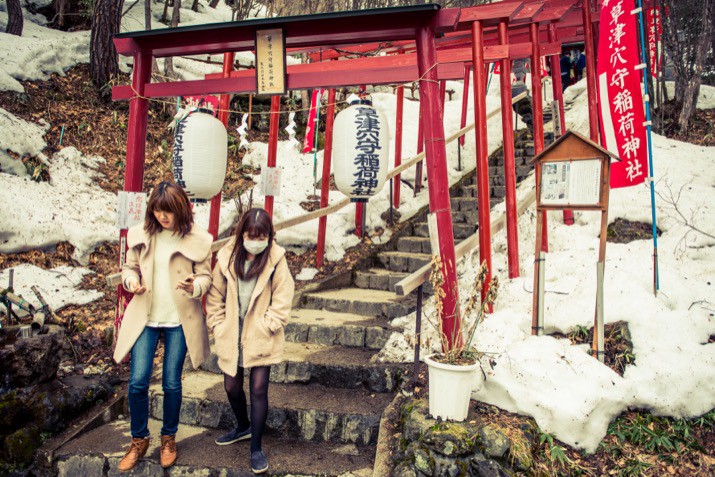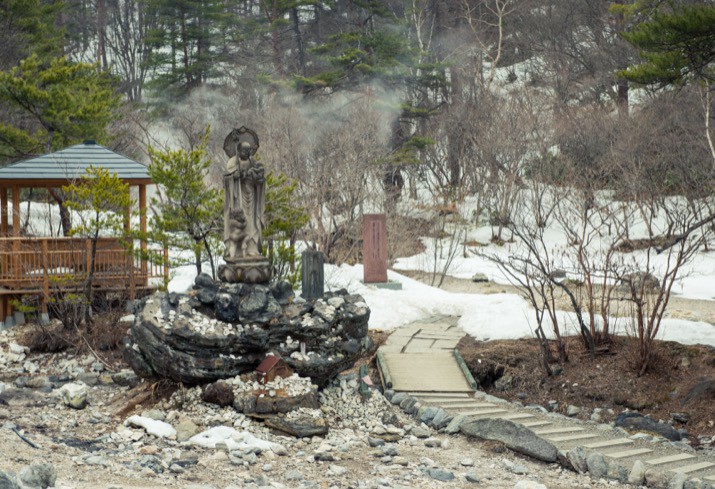Kusatsu is a small town of six thousand inhabitants in the mountains of Gunma that is known for its hot springs. The Japanese word for hot springs of volcanic origin is Onsen 温泉. Kusatsu Onsen is considered one of the three most important hot spring areas in Japan along with Gero Onsen and Arima Onsen. The legend says that “The waters of Kusatsu cure all diseases except those of love”.
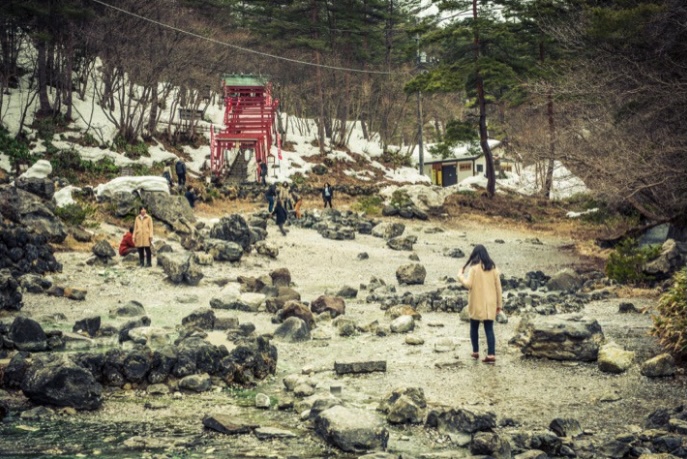
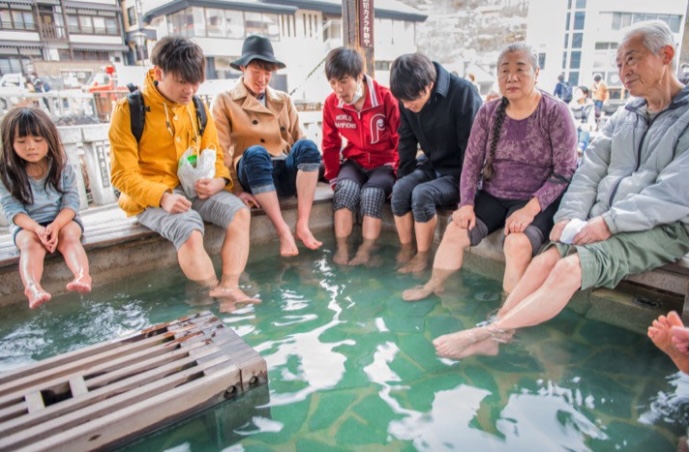
The history of Kusatsu Onsen dates back to before the Edo Era, when it was already known as a place where the waters had healing properties. In a letter that Toyotomi Hideyoshi sent to Tokugawa Ieyasu at the end of the 16th century, he recommended that he visit Kusatsu and bathe in its waters. Tokugawa was unable to go to Kusatsu in person but sent servants to travel to Kusatsu and carry the water that was considered miraculous to his castle. With the growth of venereal diseases such as gonorrhea and syphilis, Kusatsu gradually became popular in Japan. At that time, one of the only ways to fight this type of disease (even if it was simply to alleviate the pain) was to bathe in volcanic waters.

Within the onsen categories, the waters of Kusatsu are considered to be very acidic, hence the belief that it is good for killing all kinds of microbes. They say that if you throw a one yen coin into the waters of Kusatsu after a week it disappears as it has been completely corroded. If you bathe in the waters of Kusatsu do not enter with any type of ring, bracelet, pendant… In the entire Kusatsu area, 32,000 liters of water per minute rise to the surface (According to this metric, it is the busiest place in all of Japan). Water emerges from underground at more than 100 points in the town. The hot water springs are harnessed and exploited in hotels, public onsens and ryokans. 90% of the town’s economy revolves around the exploitation of its waters.
Yubatake
Finding the town center is very simple. You just have to follow the foul smell. The more it stinks the closer you are to the central square of Kusatsu where the Yubatake is located.
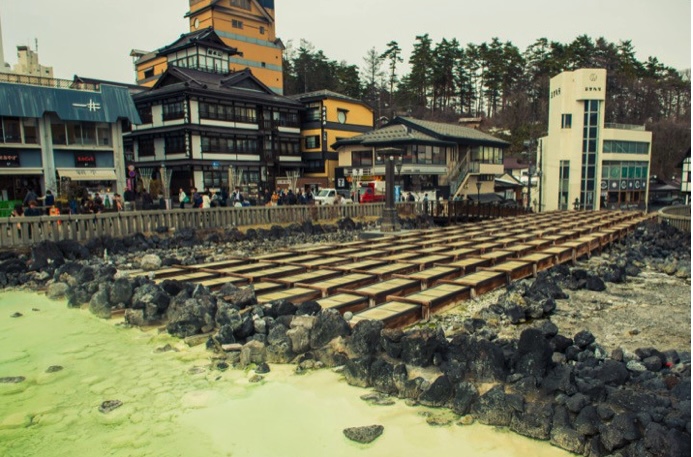
The Yubatake is the town’s main spring, from which 4,000 thousand liters of water emerge per minute. The water that comes out is directed to a kind of wooden pipes that drop it in a kind of waterfall on the other side of the square. A type of salt called yunohana (The flower of hot water) accumulates in the pipes.



The yumomi dance
In most of the Kusatsu springs, the water when it comes out is too hot to bathe in. It is necessary to cool it down. One of the methods used to lower the temperature of the water is to stir the water with wooden boards using a technique called yumomi. The yumomi technique evolved into a ritual. Today you can attend dances in which the public can see how the water is cooled with the famous tables.
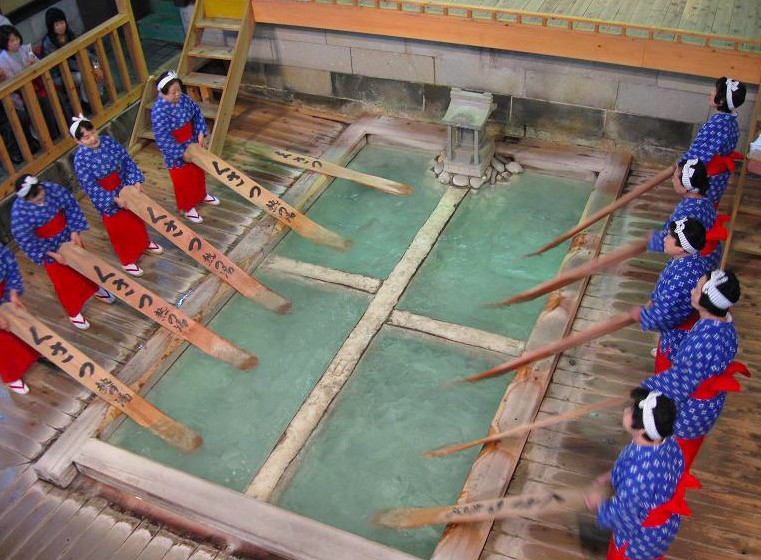
Sai no kawara
The figure of the Jizo became popular in the Heian era (784–1192) when the popularity of the Amida Buddha Nyorai intensified the fear of the inhabitants of Japan to fall into hell eternally after death. The Jizo promised to free children and people trapped in hell. One of those responsible for spreading this fear was a monk who wrote a book called Essentials for Salvation. The book described hell and the cycle of samsara. The book also tells the story of the children of Sai no kawara. According to legend, children who died prematurely were sent to the underworld. Thus they were punished for causing pain and sorrow in their parents. Sai no Kawara is the name of the river bed that served as a purgatory for children who had been condemned. The only thing the children could do was accumulate boulders from the river by piling them one on top of the other in the hope that they would then be able to climb the mountain of stones until they reached paradise.

From time to time demons from hell equipped with clubs would walk through the bed of the Sai no Kawara river, destroying the stone towers and scaring away the children trapped in limbo. Jizo was the good guy and he appeared in the river helping the children to escape the terror of the demons by hiding them in the sleeves of his clothes. Today Jizo statues are one of the most widely seen Buddhist symbols in Japan. In Kusatsu you can visit the symbolic version of the underworld Sai no kawara. In fact, this area of Kusatsu is named after the children’s legend, “Sai no kawara park”. At the end of the walk through the park you can bathe in the waters of hell. These are photos of Sai no kawara, the onsen from hell. Can you find piles of stacked stones? And demons with clubs?
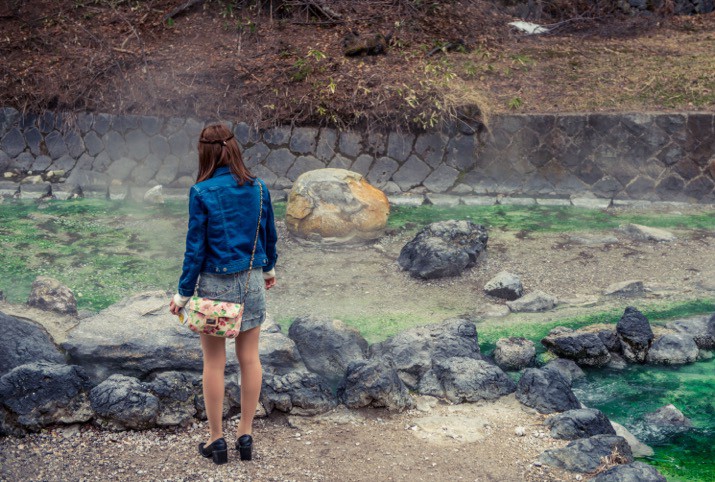



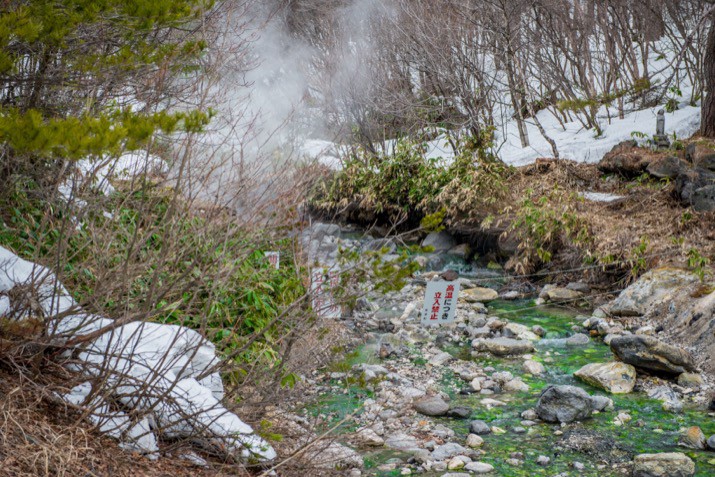
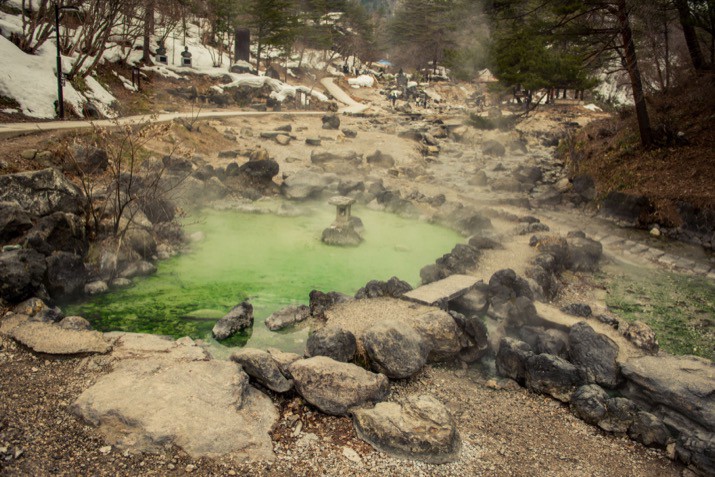
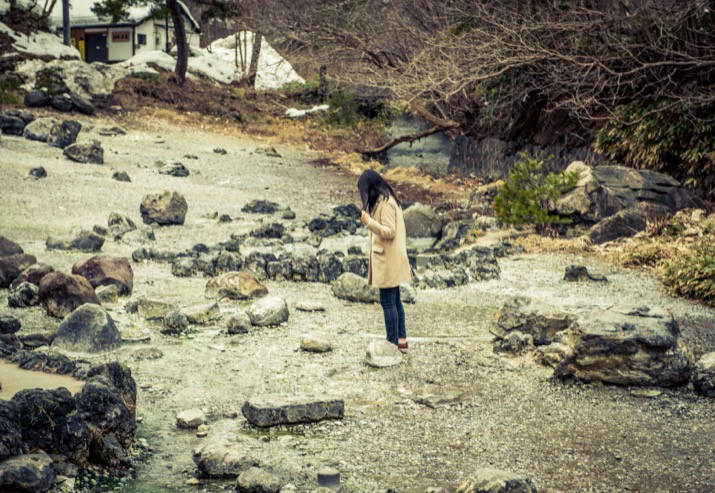
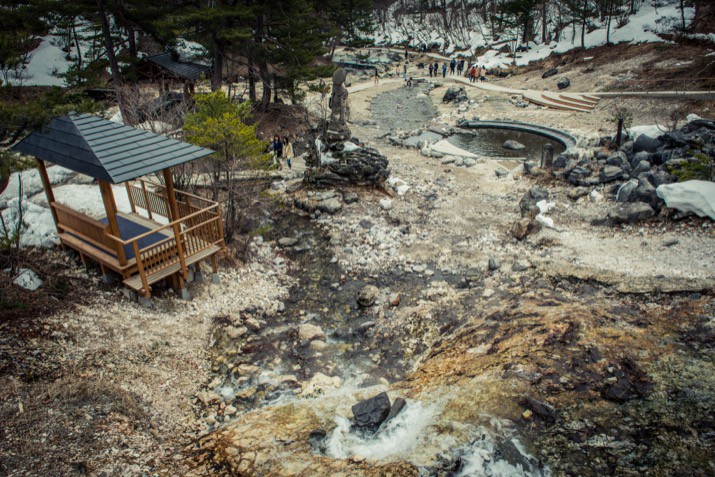
How to arrive
There are no trains that reach Kusatsu directly. We went by car but you can also take a bus that takes 25 minutes to get to Kusatsu from the Naganohara Kusatsuguchi train station (長野原草津口).
